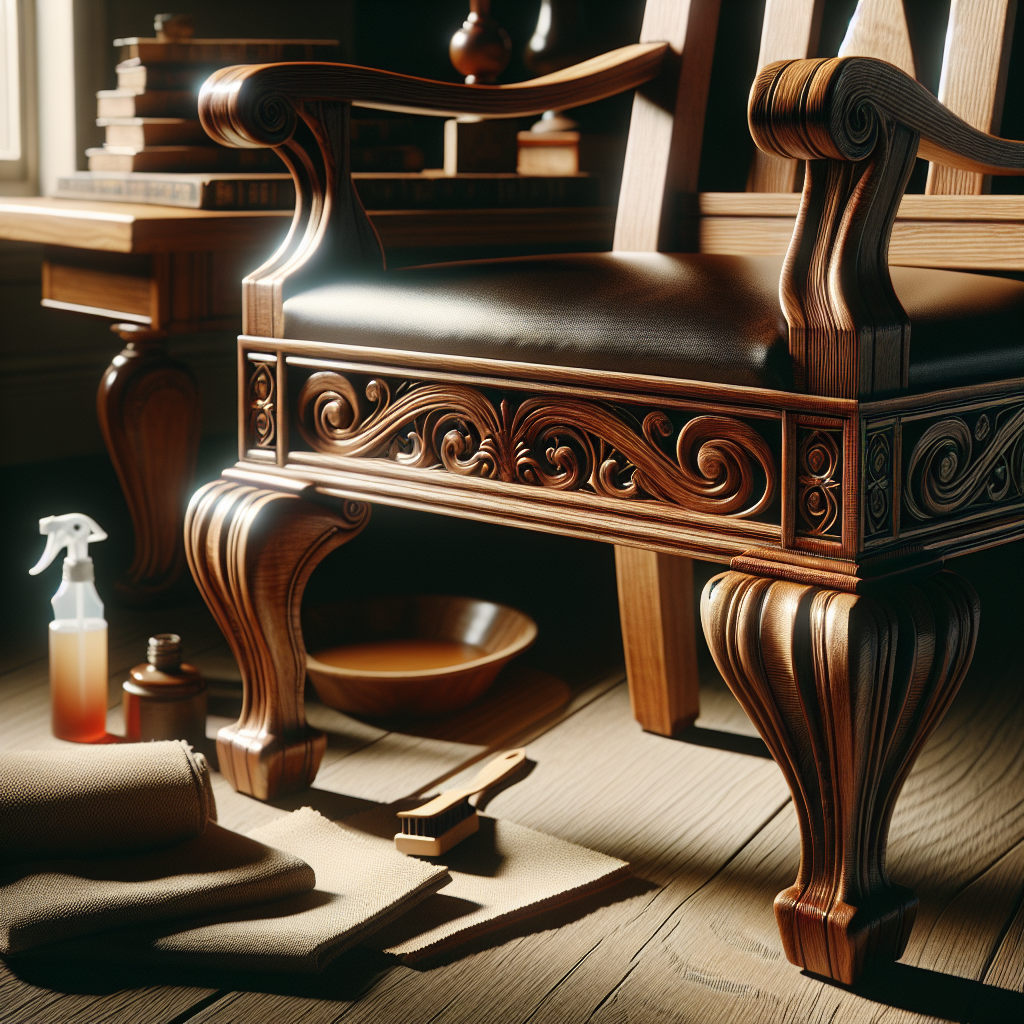Taking care of your wooden furniture is not as daunting as it may seem. With a few simple steps, you can keep your wooden pieces looking their best for years to come. From regular dusting to using appropriate cleaning products, this article will guide you on how to care for your wooden furniture and maintain its timeless beauty effortlessly. So, relax, grab a cup of tea, and let’s dive into the world of wooden furniture care.
Cleaning and Dusting
Dust Regularly
To keep your wooden furniture looking its best, it’s important to dust it regularly. Dust can accumulate on the surface of the furniture, making it appear dull and dirty. By dusting regularly, you can prevent the accumulation of dust and ensure that your furniture maintains its natural beauty. A soft cloth or a feather duster is the best tool to use when dusting your wooden furniture. Make sure to dust in the direction of the wood grain to avoid scratching the surface.
Use a Soft Cloth
When it comes to cleaning your wooden furniture, using a soft cloth is essential. Abrasive materials like rough sponges or steel wool can scratch the delicate surface of the wood. Instead, opt for a microfiber cloth or a cotton cloth that is free from any rough textures. These materials will be gentle on the wood and will effectively remove any dirt or grime without causing damage.
Avoid Harsh Cleaners
When it comes to cleaning your wooden furniture, using harsh cleaners should be avoided. Cleaners that contain chemicals or abrasives can strip away the finish or cause discoloration to the wood. Instead, opt for mild and natural cleaners. A mixture of warm water and a gentle dish soap can be used for general cleaning. Simply dip the cloth into the mixture, wring out any excess liquid, and gently wipe down the surface of the furniture. Remember to dry the furniture thoroughly afterwards to prevent any moisture damage.
Remove Stains Properly
Accidents happen, and sometimes your wooden furniture might end up with a stain. It’s important to know how to properly remove stains without causing further damage to the wood. For water-based stains like coffee or wine, blot the area with a clean, dry cloth to absorb as much of the liquid as possible. Avoid rubbing, as this can spread the stain. If the stain persists, you can try using a mild soap and water mixture to gently scrub the area. For oil-based stains, like grease or wax, use a soft cloth and a small amount of mineral spirits to remove the stain. Afterward, wipe with a clean, damp cloth to remove any residue and dry the area thoroughly.
Avoiding Excessive Moisture
Keep Away from Water
Wood and water do not mix well together. Excessive moisture can lead to warping, cracking, and swelling of the wood, causing irreversible damage to your furniture. To avoid this, it’s important to keep your wooden furniture away from water sources such as sinks, bathrooms, or windows with leaks. If you accidentally spill water on your furniture, make sure to wipe it up immediately to prevent any damage.
Use Coasters and Mats
Using coasters and mats is an excellent way to protect your wooden furniture from moisture damage. Placing coasters under glasses and mats under hot dishes or flower pots can prevent water rings and heat marks from forming on the surface of the wood. Additionally, using a tablecloth or placemats during meals can provide an extra layer of protection against spills and stains.
Address Spills Immediately
No matter how careful you are, spills can happen. When a spill occurs, it is crucial to address it immediately to prevent any lasting damage. Quickly blot the spill with a clean, absorbent cloth to absorb as much liquid as possible. Avoid rubbing, as this can spread the spill and make the damage worse. Once the majority of the liquid is absorbed, gently clean the area with a mild soap and water mixture, then dry it thoroughly.
Maintain Proper Humidity
Wood is a hygroscopic material, meaning it naturally absorbs and releases moisture from the surrounding environment. To ensure the longevity of your wooden furniture, it is important to maintain proper humidity levels. Extreme fluctuations in humidity can cause the wood to expand and contract, leading to cracks and weakening of the furniture. Using a humidifier in dry climates or a dehumidifier in humid climates can help regulate the moisture levels and keep your wooden furniture in optimal condition.
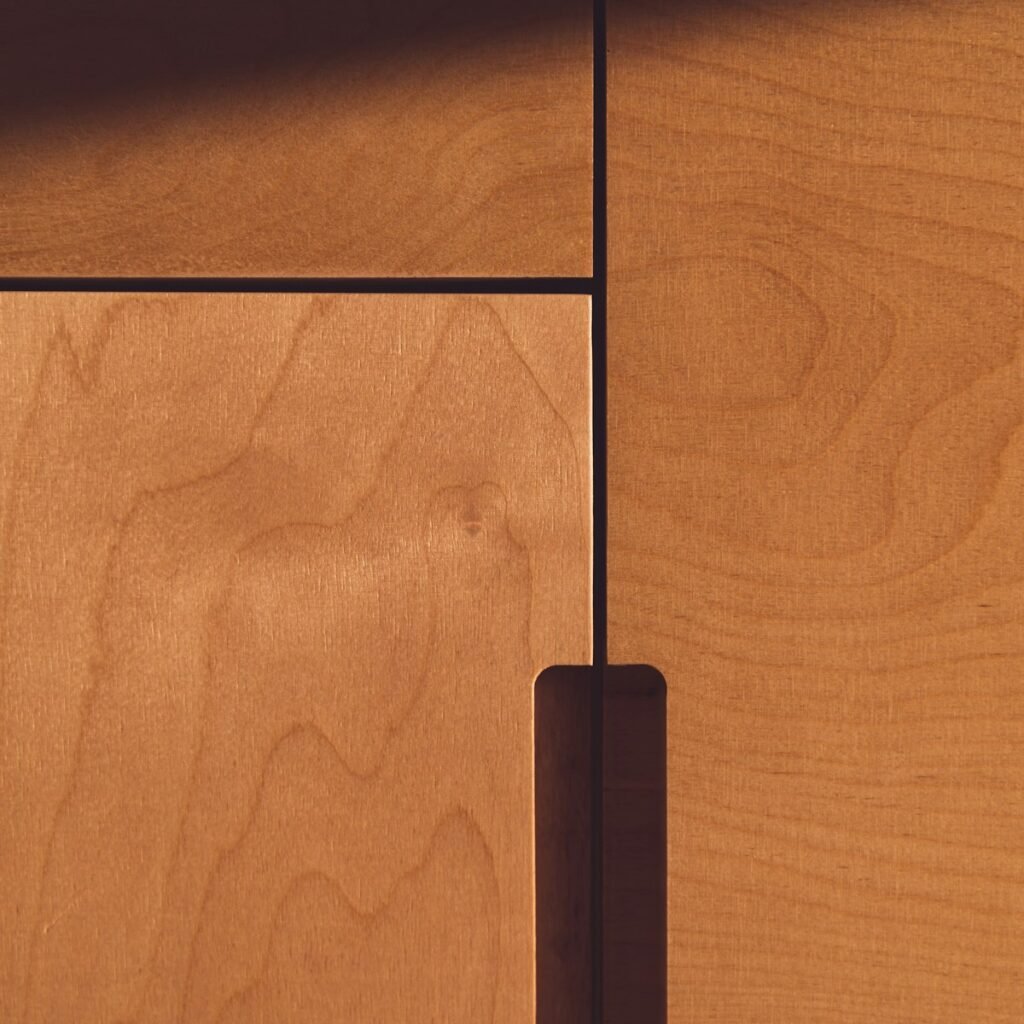
Protecting from Sunlight
Avoid Direct Sun Exposure
Sunlight can be harmful to your wooden furniture, as it can cause fading, drying, and cracking of the wood. To protect your furniture from the damaging effects of sunlight, it is essential to avoid placing it in direct sunlight. Position your furniture away from windows or use curtains or blinds to block out the harsh rays of the sun.
Use Window Treatments
Window treatments such as curtains, blinds, or UV-blocking films can help protect your wooden furniture from the harmful effects of sunlight. These treatments can reduce the amount of UV rays that penetrate through the windows and onto your furniture, minimizing the risk of fading and drying. Consider investing in window treatments that specifically offer UV protection for added peace of mind.
Rotate Furniture Regularly
Rotating your furniture regularly can help distribute the exposure to sunlight more evenly. By periodically moving your furniture, you can ensure that all sides of the piece receive equal amounts of sunlight, preventing uneven fading or discoloration. This simple step can help prolong the life and beauty of your wooden furniture.
Consider UV Protection
If your wooden furniture is particularly susceptible to sun damage or if you live in an area with intense sunlight, you may want to consider applying a UV protective finish. These finishes are designed to shield your furniture from the harmful effects of UV rays. Consult with a professional or refer to the manufacturer’s instructions for the best UV protection options for your wooden furniture.
Preventing Scratches and Dents
Use Felt Pads
Felt pads are a simple yet effective way to prevent scratches and dents on your wooden furniture. Attach these protective pads to the bottom of chair legs, table legs, or other furniture feet to create a cushioning effect and reduce friction between the furniture and the floor. This provides a protective barrier and prevents damage to both your furniture and your floors.
Avoid Dragging
One of the most common causes of scratches on wooden furniture is dragging or sliding items across the surface. To prevent this, always lift and carry your furniture when moving it rather than dragging it. This simple action can save your furniture from unsightly scratches and preserve its appearance for years to come.
Proper Lifting and Moving
When it’s necessary to move your wooden furniture, it’s important to do so correctly to avoid causing any damage. Before lifting, make sure to clear the furniture of any objects that might fall or break. When lifting, bend your knees and use your leg muscles to support the weight, rather than straining your back. If the furniture is heavy and you need assistance, ask someone to help you. By taking these precautions, you can minimize the risk of dropping or mishandling your furniture.
Apply Protective Coatings
Applying protective coatings such as wax or polyurethane can help prevent scratches and dents on your wooden furniture. These coatings create a layer of protection on the surface of the wood, acting as a barrier against everyday wear and tear. Before applying any protective coating, make sure to clean and dry the furniture thoroughly, following the manufacturer’s instructions for the specific product you are using.
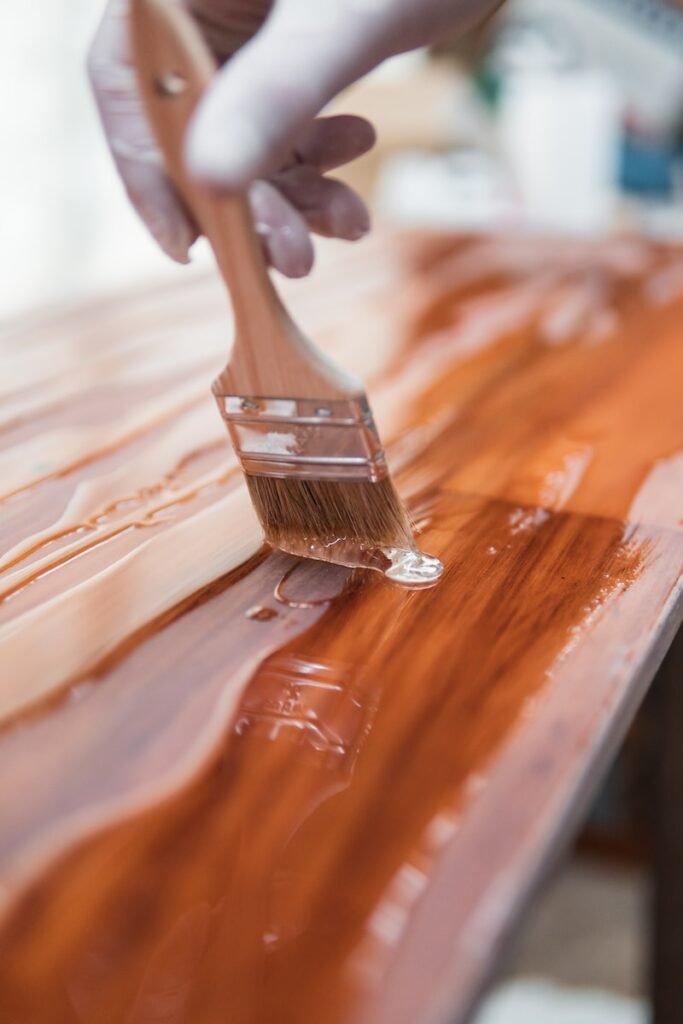
Maintaining the Finish
Regularly Dust and Wipe
To maintain the finish of your wooden furniture, regular dusting and wiping are essential. Use a soft, lint-free cloth to gently remove any dust or debris from the surface of the furniture. Avoid using excessive force or abrasive materials that could damage the finish. In addition to regular dusting, periodic wiping with a damp cloth can help remove any built-up dirt or grime, keeping your furniture looking clean and polished.
Apply Furniture Polish
Applying furniture polish can enhance the beauty of your wooden furniture and help protect the finish. Choose a high-quality polish that is specifically formulated for the type of wood and finish you have. Apply the polish in a thin, even layer, following the manufacturer’s instructions. Buff the furniture gently with a clean, dry cloth to achieve a lustrous shine. Be mindful not to over-polish, as this can lead to a buildup of residue.
Consider Refinishing
Over time, the finish on your wooden furniture may begin to show signs of wear or damage. When this happens, consider refinishing the piece to restore its original beauty. Refinishing involves removing the old finish, sanding the surface, and applying a new finish. It can be a time-consuming process, but the results can be truly transformative, giving your furniture a fresh new look.
Repairing Surface Scratches
Surface scratches are a common occurrence on wooden furniture. While they may seem unsightly, many surface scratches can be easily repaired. Start by cleaning the scratch with a mild soap and water solution. If the scratch is shallow, you can use a wax pencil or a wood marker that matches the color of your furniture to fill in the scratch. For deeper scratches, consider using a wood filler or paste. Apply the filler to the scratch, smooth it out, and let it dry. Once dry, sand the area gently, and apply a finish to match the surrounding surface.
Avoiding Extreme Temperatures
Avoid Direct Heat Sources
Extreme heat can cause significant damage to wooden furniture. Avoid placing your furniture near direct heat sources such as radiators, fireplaces, or heating vents. The intense heat can cause the wood to dry out and potentially crack or warp. By keeping your furniture away from these sources, you can minimize the risk of heat-related damage.
Maintain a Stable Temperature
Consistency is key when it comes to maintaining the condition of your wooden furniture. Fluctuations in temperature can cause the wood to expand and contract, leading to structural damage over time. To keep your furniture in optimal condition, try to maintain a stable indoor temperature. Avoid exposing your furniture to extreme heat or cold, and aim for a moderate, comfortable environment.
Use Air Conditioning or Humidity Control
Air conditioning not only keeps you cool, but it can also help regulate the temperature and humidity levels in your home, which is beneficial for your wooden furniture. Using air conditioning during hot summer months can help maintain a comfortable temperature and prevent excessive heat buildup. Additionally, using a humidifier or dehumidifier can help control the humidity levels in your home, preventing the wood from drying out or absorbing too much moisture.
Allow for Natural Expansion and Contraction
Wood is a natural material that expands and contracts with changes in temperature and humidity. To prevent damage to your wooden furniture, it is important to allow for this natural movement. Avoid positioning your furniture too close to walls or other objects that restrict its ability to expand and contract. Leave some space around the furniture to allow proper air circulation and movement.
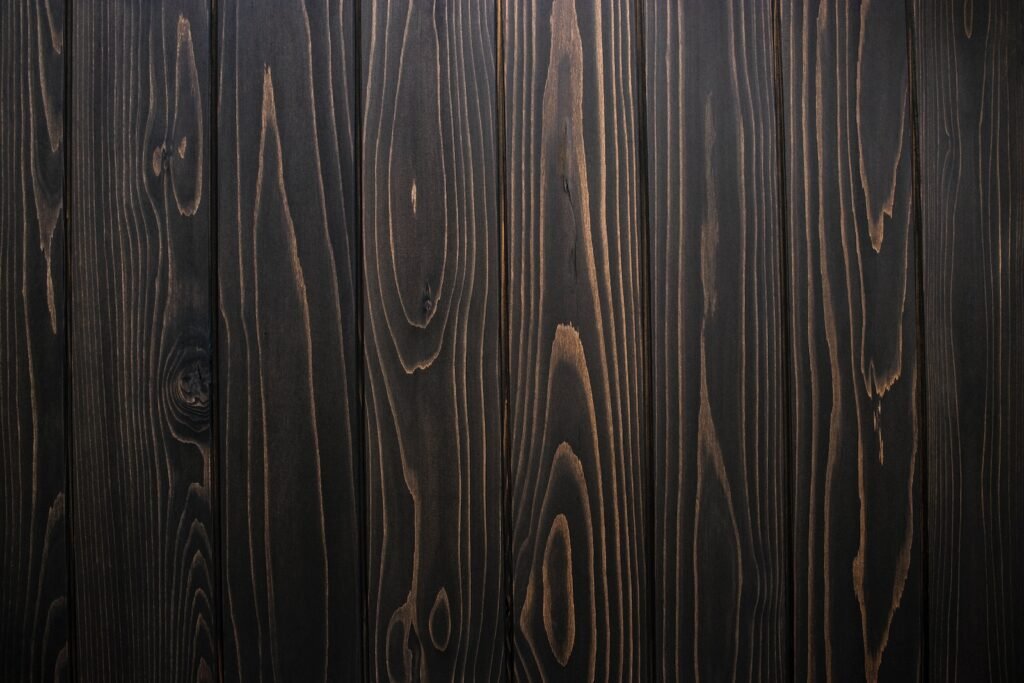
Dealing with Humidity and Dryness
Use Humidifiers in Dry Climates
In dry climates, where the air lacks moisture, it is beneficial to use a humidifier to add humidity to the environment. Dry air can cause the wood to dry out and potentially crack or split. By using a humidifier, you can introduce moisture into the air, helping to prevent these issues and keep your wooden furniture in optimal condition.
Avoid Excessive Moisture in Humid Climates
On the other hand, in humid climates where moisture levels are high, it is important to avoid excessive moisture around your wooden furniture. Excess humidity can cause the wood to swell, warp, or develop mold or mildew. Use dehumidifiers or air conditioners to reduce humidity levels if necessary, and ensure proper ventilation in your home.
Allow for Seasonal Adjustments
Seasonal changes in temperature and humidity can have a significant impact on wooden furniture. As the seasons change, the moisture content of the air fluctuates, causing the wood to expand or contract. To accommodate these changes, it is important to make seasonal adjustments to the care of your furniture. During dry seasons, consider using a humidifier, while during humid seasons, use dehumidifiers or air conditioners to maintain a stable environment for your furniture.
Use Wood Conditioner
Wood conditioner is a product specifically designed to moisturize and nourish wooden furniture. It helps to replenish the natural oils and moisture in the wood, preventing it from drying out or becoming brittle. Apply the wood conditioner according to the manufacturer’s instructions, and wipe off any excess. Regular use of a wood conditioner can help maintain the moisture balance of your wooden furniture and prolong its lifespan.
Preventing Insect Infestation
Inspect Wood Regularly
Wooden furniture can be susceptible to insect infestation if not properly cared for. Regularly inspect your furniture for any signs of insects such as small holes, tunnels, or sawdust-like material. If you notice any indication of infestation, take immediate action to prevent further damage. Contact a professional exterminator who specializes in treating wooden furniture for the most effective and safe removal of pests.
Keep Furniture Clean
Keeping your wooden furniture clean is an important step in preventing insect infestation. Regularly wipe down and dust your furniture to remove any food particles or debris that might attract insects. Vacuum upholstered furniture to remove any crumbs or other potential food sources. By keeping your furniture clean, you can minimize the risk of attracting pests.
Avoid Storing in Damp Places
Damp or humid environments can create the perfect conditions for insects to thrive. Avoid storing your wooden furniture in basements, attics, or any other area prone to moisture buildup. If you must store your furniture in these areas, use dehumidifiers or moisture-absorbing products to create a dry environment that is less hospitable to insects.
Use Natural Insect Repellents
To further protect your wooden furniture from insect infestation, consider using natural insect repellents. Cedar oil or cedar chips are known for their insect-repelling properties and can be effective in deterring pests. Place cedar chips in drawers or storage compartments, or use cedar oil to treat the surface of the wood. Alternatively, lavender sachets, peppermint oil, or lemon oil can also help repel insects while adding a pleasant scent to your furniture.
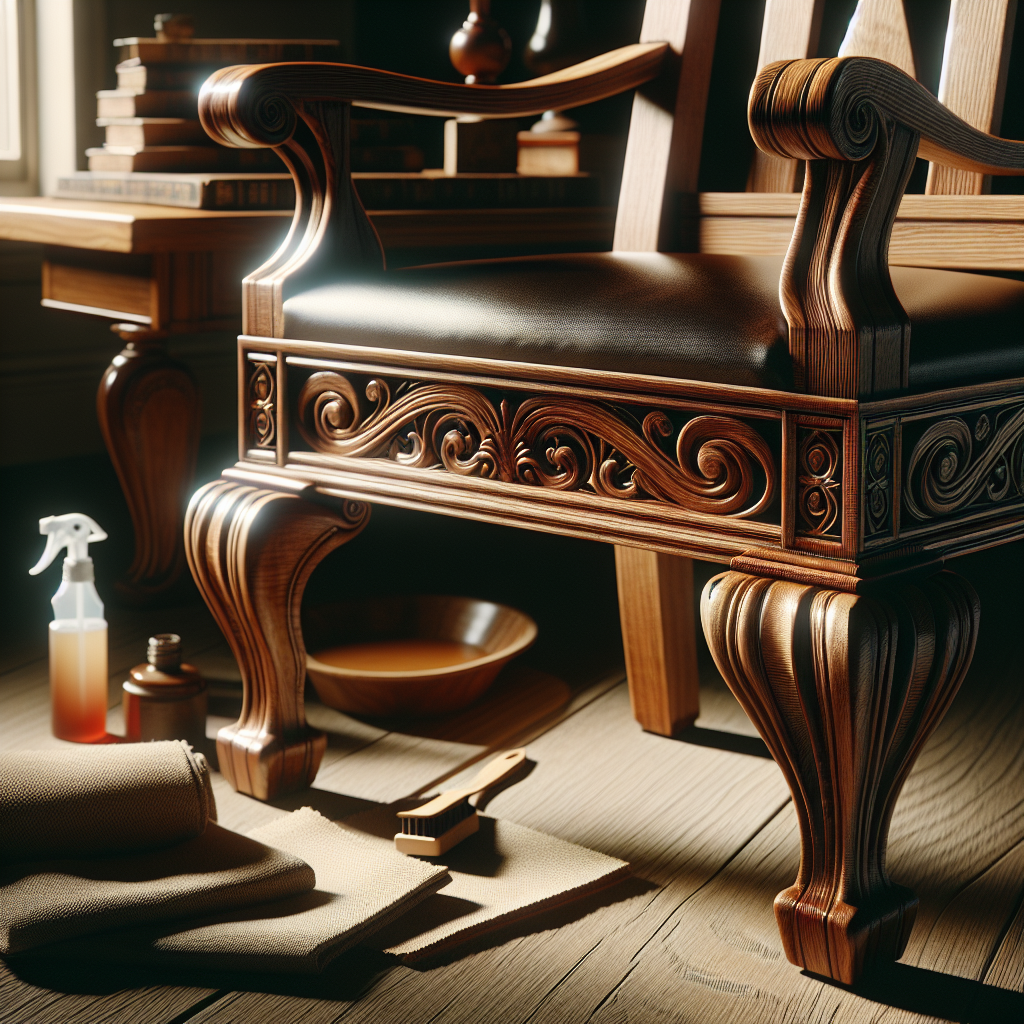
Repairing and Restoring
Evaluate the Damage
When your wooden furniture is in need of repair or restoration, the first step is to evaluate the extent of the damage. Carefully inspect the furniture for any loose joints, cracks, or other issues that require attention. Take note of the areas that need repair and determine whether it is something you can tackle yourself or if it requires professional assistance.
Fix Loose Joints
One common issue with wooden furniture is loose joints. Over time, the glue holding the joints together can weaken, causing the furniture to become unstable. To fix loose joints, you can use wood glue or epoxy adhesive. Apply the adhesive to the joint, then clamp the furniture together until the adhesive has dried completely. This will help strengthen the joint and restore stability to your furniture.
Patch and Fill Cracks
Cracks in wooden furniture can be unsightly and compromise the structural integrity of the piece. To patch and fill cracks, start by cleaning the area and removing any loose debris or finish. Apply a wood filler or putty that matches the color of your furniture to the crack, smoothing it out with a putty knife. Allow the filler to dry completely, then sand it gently until it is flush with the surrounding surface. Finish off by applying a fresh coat of finish to blend the repaired area with the rest of the furniture.
Refurbish or Reupholster
If your wooden furniture has lost its luster or the upholstery is worn out, refurbishing or reupholstering can breathe new life into the piece. Refurbishing involves sanding down the wood, applying a new finish or paint, and adding any desired decorative touches. Reupholstering, on the other hand, entails replacing the fabric or padding on chairs, sofas, or ottomans. Both options can transform your furniture and give it a fresh, updated look.
Proper Storage and Handling
Choose Suitable Storage Environment
When it comes to storing your wooden furniture, choosing a suitable environment is crucial. Opt for a space that is dry, well-ventilated, and free from extreme temperature fluctuations. A cool and dark area, such as a spare room or a climate-controlled storage unit, can help protect your furniture from damage caused by sunlight, humidity, and pests.
Disassemble or Cover when Storing
Before storing your wooden furniture, consider disassembling it, if possible. This will make the pieces easier to transport and reduce the risk of damage during storage. If disassembly is not an option, consider covering the furniture with protective materials such as blankets or furniture covers to prevent dust accumulation and scratches.
Avoid Heavy Objects on Top
When storing wooden furniture, it is important to avoid placing heavy objects on top of it. The weight of heavy items can cause the furniture to warp or crack. Additionally, avoid stacking multiple pieces of furniture on top of each other, as this can lead to instability and potential damage.
Wrap with Protective Materials
To provide the ultimate protection for your wooden furniture during storage, consider wrapping it with protective materials. Bubble wrap, furniture blankets, or shrink wrap can help cushion the furniture and prevent any accidental bumps or scratches. Secure the protective materials with tape or fasteners to ensure they stay in place throughout the storage period.
By following these comprehensive tips and guidelines, you can ensure that your wooden furniture remains in great condition for years to come. Proper cleaning, maintenance, and protection from environmental factors will help preserve the beauty and functionality of your furniture, allowing you to enjoy it for generations.

